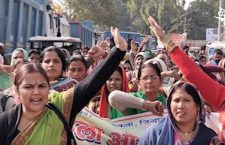The Price of a Woman’s Life
Deconstructing samjhauta, the insidious practice that puts a steep price on a dead body, in a final act of violence against the woman
The recently-released NCRB report on crimes in 2016 included quite a few shocking findings concerning crimes against women: The general crime rate witnessed a spike of 83%; juxtaposed against this statistic is the shocking fact that the conviction rate dipped to an all-time low. Sitting tight on the number one spot on this nefarious list is Uttar Pradesh – In 2016, U.P. accounted for 14.5% of the total cases of crimes against women.
And yet data can only tell you so much.
Beyond the mountain of FIR’s lies the murky terrain of unreported cases – those that never made it to the local thana, or those that were never registered. And even beyond this murky terrain, exists a hell so peculiar, so relentless, one could mistake it for a study in crime noir.
These are the crimes of samjhauta – murders of women that are swept under the carpet, hushed forever in an achingly ubiquitous U.P. tradition – a compromise reached between those directly involved, so that it stays clear of the legal machinery. “When a woman dies, we feel pain”, says Pramod Kumar Nishad, former pradhan of Barehta village in Bundelkhand’s Banda district. And then offers some rhetoric, “But if both the sides agree to the compromise – the mother’s side and the in-laws’ side – then as the head of the village, why would I want that case to reach the court?”
The prevalence of samjhauta is in tandem with the on-ground realities of rural Bundelkhand, where a compromise often involves exchange of money – and a cow or two – hard to resist by families that are struggling to survive. As Munna puts it, “We had given them one lakh rupees to build their house. They should return that, along with the dowry. Bas.” He has rationalized this as “punishment” for Kiran’s in-laws – his daughter who was “found” hanging one morning, after having lived through 25 long years of domestic abuse that had of late, turned to death threats.
But in a land where a girl is “kachcha dhan (weak investment)”, it is often preferred that not too many feathers are ruffled when one dies… or is murdered. There are, after all, several resultant causes that can be thought of – suicide and accident being the most common. Uma, for instance, of Barehta, was said to have committed suicide by swallowing hair-dye – in sharp contrast to the postmortem reports. And Rajjo burnt herself while making dinner one night – only the soles of her feet were uncharred, and her screaming didn’t wake up her husband from his slumber.
There’s a reason why the preferred term is “laash pe samjhauta”. It is indeed a compromise reached over a dead woman’s body. Because even after she’s been killed, there is still violence that can be done to her.
In Bundelkhand, it is the stuff of everyone’s imagination. This is a nightmare that works for all stakeholders.
– Pooja Pande
Video first published on Scroll
Published on Dec 18, 2017

